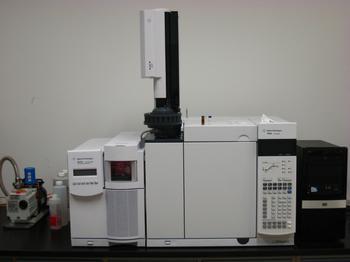
The organic light emitting diode is a thin film that emits light when a certain current is applied. They are widely used in a variety of electronic products such as televisions, cell phones, computer monitors, watches, and display screens. Many manufacturers are constantly devoting themselves to the development of OLEDs and the commercialization of OLEDs.
In the construction of OLED devices, high-purity raw materials are required to extend the lighting time as much as possible and improve the quality of the final product, especially for the blue light emitter. Manufacture of OLED materials requires the use of a large number of patented technologies, which makes the manufacture of high-quality OLED raw materials a profitable business.
Patent technology is the main driving force in the field of OLED chemical materials, which limits the commercialization of OLED devices and also contributes to the high manufacturing costs of OLED devices. The relevant market analysis report pointed out that in the next five years, OLED will become an important niche market, and it is expected that the market sales will reach 5 million US dollars by 2016.
OLED materials are usually analyzed using a variety of microscopic techniques. Interestingly, some of the LC-based methods have been applied in the literature on the analysis of the stability of OLED phosphor emitters. Many of the methods documented in 2, 3, and 4 require more than 30 minutes of analysis time. This application note describes a short run time and high selectivity method using UPC2(TM)-diode array detector-mass spectrometry to analyze a ruthenium complex dye (Ir(Fppy). ) 3) The purity.
The UPC2 method utilizes supercritical fluid chromatography (SFC) carbon dioxide as the main mobile phase, and uses methanol as a powerful solvent to separate out the target analyte, a planar metal complex.
The developed UPC2/MS method can complete the purity analysis of the luminescent material Ir(Fppy)3 within 5 minutes. The method can also be used to characterize the stability of the material luminescence. Using MS data obtained from ACQUITYSQD, three unknown impurity peaks can be quickly identified. Compared with previously reported LC/MS, this UPC2 method can greatly reduce the running time (1/10 for LC/MS method), reduce the solvent consumption, and can greatly reduce the wasted solvent (LC/MS method) 100% organic solvent is used in the analysis). The UPC2 method has a high selectivity and its specificity far exceeds other methods, thereby helping chemical material manufacturers to better grasp and control the performance of these unstable organic blue light-emitting diodes to produce better quality OLEDs. Products can also better protect intellectual property. The organic light emitting diode is a thin film that emits light when a certain current is applied. They are widely used in a variety of electronic products, such as televisions, cell phones, computer monitors, watches, and display screens. Many manufacturers are constantly devoting themselves to the development of OLEDs and the commercialization of OLEDs.
In the construction of OLED devices, high-purity raw materials are required to extend the lighting time as much as possible and improve the quality of the final product, especially for the blue light emitter. Manufacture of OLED materials requires the use of a large number of patented technologies, which makes the manufacture of high-quality OLED raw materials a profitable business.
Patent technology is the main driving force in the field of OLED chemical materials, which limits the commercialization of OLED devices and also contributes to the high manufacturing costs of OLED devices. The relevant market analysis report pointed out that in the next five years, OLED will become an important niche market, and it is expected that the market sales will reach 5 million US dollars by 2016.
OLED materials are usually analyzed using a variety of microscopic techniques. Interestingly, some of the LC-based methods have been applied in the literature on the analysis of the stability of OLED phosphor emitters. Many of the methods documented in 2, 3, and 4 require more than 30 minutes of analysis time. This application note describes a short run time and high selectivity method using UPC2(TM)-diode array detector-mass spectrometry to analyze a ruthenium complex dye (Ir(Fppy). ) 3) The purity.
The UPC2 method utilizes supercritical fluid chromatography (SFC) carbon dioxide as the main mobile phase, and uses methanol as a powerful solvent to separate out the target analyte, a planar metal complex.
The developed UPC2/MS method can complete the purity analysis of the luminescent material Ir(Fppy)3 within 5 minutes. The method can also be used to characterize the stability of the material luminescence. Using MS data obtained from ACQUITYSQD, three unknown impurity peaks can be quickly identified. Compared with previously reported LC/MS, this UPC2 method can greatly reduce the running time (1/10 for LC/MS method), reduce the solvent consumption, and can greatly reduce the wasted solvent (LC/MS method) 100% organic solvent is used in the analysis). The UPC2 method has a high selectivity and its specificity far exceeds other methods, thereby helping chemical material manufacturers to better grasp and control the performance of these unstable organic blue light-emitting diodes to produce better quality OLEDs. Products can also better protect intellectual property.

 The organic light emitting diode is a thin film that emits light when a certain current is applied. They are widely used in a variety of electronic products such as televisions, cell phones, computer monitors, watches, and display screens. Many manufacturers are constantly devoting themselves to the development of OLEDs and the commercialization of OLEDs.
The organic light emitting diode is a thin film that emits light when a certain current is applied. They are widely used in a variety of electronic products such as televisions, cell phones, computer monitors, watches, and display screens. Many manufacturers are constantly devoting themselves to the development of OLEDs and the commercialization of OLEDs. 
